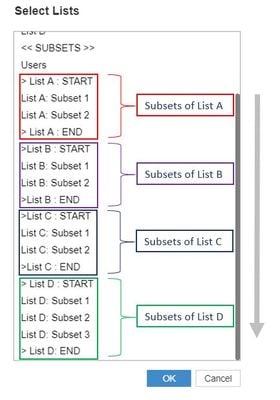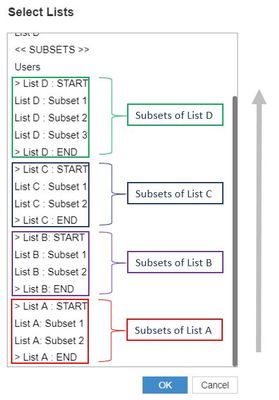The ordering of list subsets in Anaplan has always been an enigma to me, like a type of Anaplan acts in mysterious ways adage. I always thought, who am I to question the inner workings of our beloved platform in the cloud? In this article, I'll address the topic of organizing subsets.
If you work like me by adding list subsets on an ad-hoc and ongoing basis, adjusting to changing requirements, and leveraging Anaplan list subsets feature, you have probably experienced the same astonishment when opening the “Applies to” and seeing the subsets all over the place. You may find yourself asking, what happened here?
If you don’t know what I am referring to, here is an illustration with only 4 lists and 9 subsets. When you create a new module and need to pick the dimensions, the subsets of each list appear under the main list.

However, when you click “Applies to” in Blueprint (or in the list of modules), the view is different. It can be messy.

You can imagine that with a growing number of lists and subsets, one can get lost.
Methodology
Here is a tip I use to tidy up the list subsets.
1. Every time I add a new list, I immediately create two dummy subsets > List X: START and >List X: END

2. Then, whenever I add subsets to that list, I do it between these two. In general, I add the new subset before >List X: END. But adding it after >List X: START, also works.

3. That's it...almost!
Creating the lists
This method works best when the lists are added from bottom to top. Continuing with my illustration above, if I add the lists in this order: List D, List C, List B, List A, I end up with a clean grouping of subsets, appearing in the same order as the lists.

If I create the lists in the opposite order: List A, List B, List C, and List D (as most people would), I end up with the list subsets in the opposite order. This is not a concern, as I still know where to find them.

If I add new lists between existing lists, then the order will be mixed up, but at least I will have all the subsets of a given list grouped together.
We cannot completely demystify Anaplan inner workings; we need a part of mystery to keep us on our toes!